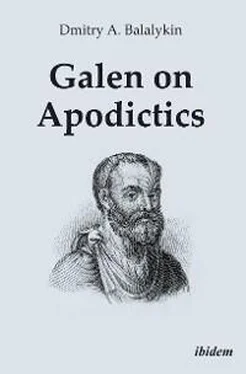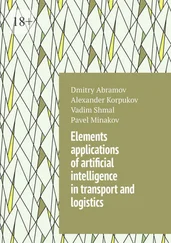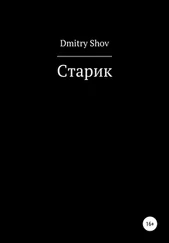The basic definition of stroke in modern clinical practice is “cerebral circulation disorder”. Of course, the meaning of this nosology changes over time. For instance, in the late 1980s, E.I. Gusev offered the following definition: “Stroke is acute cerebral circulation disorder”. 14Therefore, based on the nature of the pathological process, he divided stroke into ischemic stroke and hemorrhagic stroke. Hemorrhagic strokes are hemorrhages in brain matter and under the brain lining. Mixed forms of stroke were also identified, for example, subarachnoid-parenchymal stroke. Ischemic stroke is basically cerebral infarction as a result of thrombosis or embolism of the extra- or intracranial vessel. The etiological version could be neurothrombotic stroke, which is associated, for example, with atherosclerotic vascular disease. The essence of the matter is the same—violation of blood supply to the brain. 15The interpretation becomes more complicated over time: N. N. Yakhno no longer uses the term “hemorrhagic stroke” in 2007, instead calling this disease “intracerebral hemorrhage”; however, the description of etiology and pathogenesis does not change drastically. “Stroke” now means only what was previously called “ischemic stroke”. This disease certainly belongs to the group of diseases which relate to “acute cerebral circulation disorder”. 16The risk factors for the development of such disorders primarily include arterial hypertension. Furthermore, most authors make reference to old and senile age, hyperlipidemia, hyperglycemia, often associated with insufficient physical activity, obesity and bad habits. It is natural that constant stress and psychoemotional overburden feature among risk factors of stroke itself and among preconditions for the development of its primary cause—arterial hypertension. 17Take note of the fact that the classification of stroke is refined even at the modern-day stage of the development of science: in the twenty years separating the publication of E.I. Gusev’s textbook and the guide edited by N.N. Yakhno, significant amendments 18have been made to this classification.
Now let us compare Galen’s interpretation of apoplexy and the modern definition of stroke—their similarities and differences are clear straight away. It is interesting that T. Kuhn’s general views on partial incommensurability and the interpretation of the text are brilliantly confirmed by this example. The modern-day meaning of the pathogenesis of stroke is based on the concept of cerebral circulation disorder. This factor basically implies overall disturbance of nutrition and vital activity of the affected part of brain matter. Obviously Galen could not explain the function of the blood, the significance of gas exchange in tissue, etc. However, his understanding of apoplexy as the impairment of the mechanism of the circulation of the “animal spirit” touches on the issue of ensuring normal activity of the brain, which, according to Galen, was ensured by the flow of blood and the “animal spirit” in the arteries. Furthermore, apoplexy, which, according to Galen, is caused by excess blood and local plethora, has many similarities with the modern-day concept of intracerebral haemorrhage. Galen calls the dropping of brain temperature as a result of the impairment of the mechanism which ensures its normal activity and “clogging” with breakdown products another factor (besides circulation of pneuma) of the pathogenesis of apoplexy. Holding forth on the risk factors of the development of apoplexy, Galen lays out the preconditions for the formation of the modern view on the problem of stroke—dietary regimen, age and physical exercise. This is largely associated with his methodology, which is based on the doctrine of the unity of the corporeal and the spiritual in the human body, which enables to take into account the impact of the psychoemotional component as a pathogenetic factor.
A crucial attribute of Galen’s medical theory, which could be called “natural philosophy of medicine” has to be emphasised. In it, disease was not associated with anatomical location and a special etiological factor. In other words, in order to understand Galen, we have to ditch the modern conception of disease (or go beyond its bounds). Nonetheless, similar to how T. Kuhn compares the physics of Aristotle, I. Newton and A. Einstein, doctors, while recognising the difference between the medicine of Galen, S.P. Botkin and E.M. Tareev, have to keep in mind the various types of scientific rationality, which are typical of different historical phases of the development of science.
Galen explains the phenomena of medical practice in the language of philosophy. For example, when analysing his treatise On the Doctrines of Hippocrates and Plato 19, it should be remembered that in the debate on the “soul”, we are dealing not with the modern language of philosophy and theology, but with the specific language of science of that time, wherein this concept had meanings different from those familiar to us. The same applies to the strictly medical language of the Galenic clinician. This is the very same question of the “commensurability” or “incommensurability” of scientific knowledge from different eras. Galen also explains physiological processes occurring in the human body using the category of “soul”. For instance, digestion and haemopoiesis occur with the direct involvement of the “inferior parts of the soul”, which are located in the liver: for food to be properly absorbed into the body, and for primary elements to properly replenish anatomical structures of various parts of the body, there is need for the active presence of the “vegetative spirit”, a type of endogenouss pneuma, which is a derived from the inferior, “desiring” part of the soul. The liver is particularly the organ which forms blood and saturates the blood with nutrients. The process of digestion and absorption ends in the liver, and functions of venous blood begin from it. The same applies to the other two types of endogenous pneuma which, according to Galen, are derived from the activity of the superior (rational) and middle (violent) parts of the soul. They particularly explain the realisation of the functions of the brain, heart and arterial blood. Therefore, according to Galen, diseases of the soul should be approached from the same standpoint as diseases of the body. 20
Discussing the matter of commensurability, I also suggest to use the Stepin’s classification: classical, nonclassical, post-nonclassical paradigms of cognition.
The potential of Galen’s system is defined by the principle of teleology, which is the basis of his views on the human being. In this case, the term “teleology” is used in the classical sense as a “practical function”. It is about the view on the structure of animals and human as being practical in relation to the function they perform. However, this principle has another side. It determines the potential use of the system of investigation (the ability to allow the governing paradigm to take in and absorb new facts). A teleological view of the anatomy of the human being provides a deep conviction of the extreme importance of every detail, both known and unknown. It constantly stimulates the explorer to new observations and research. On the one hand, the human organism is knowable; on the other hand, doctors are never satisfied with the amount of knowledge they have and try to expand it.
This is why Galen focuses on the views expressed by Plato, particularly the concept of the psychosomatic unity of the human. It should be clear to any historian of medicine that without the appropriate evaluation of the soul, the body and their interactions, there could be no integrated approach to the diagnosis of illness and its treatment.
Great danger lurks in wait for the scientist when historical and philosophical inquiry is focused solely on specific details of the professional work itself and sets out to answer only the questions: “who discovered?”, “how did they discover it?” The question why a particular scientist at a certain time and place made their discovery is not even considered. And it is not considered because the medical historian lacks the necessary package of general philosophical and general historical knowledge.
Читать дальше












